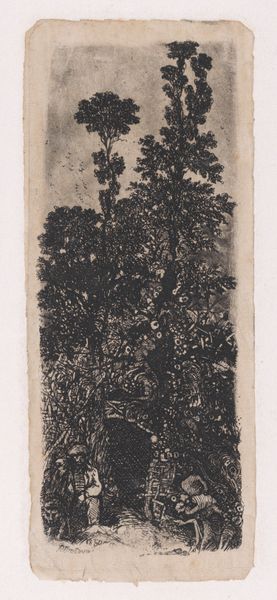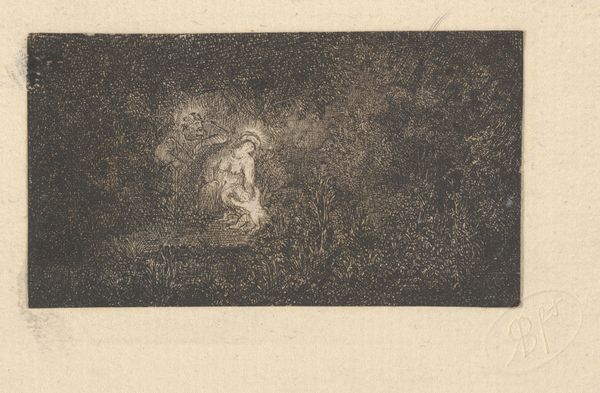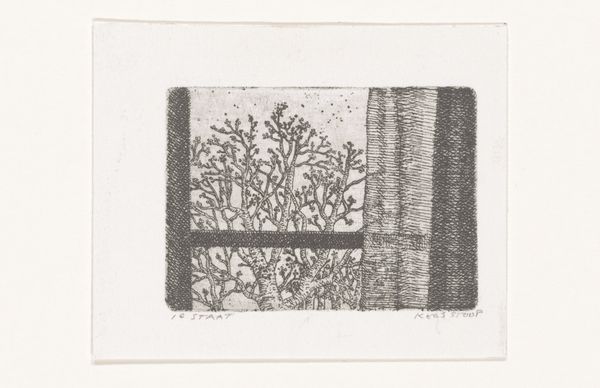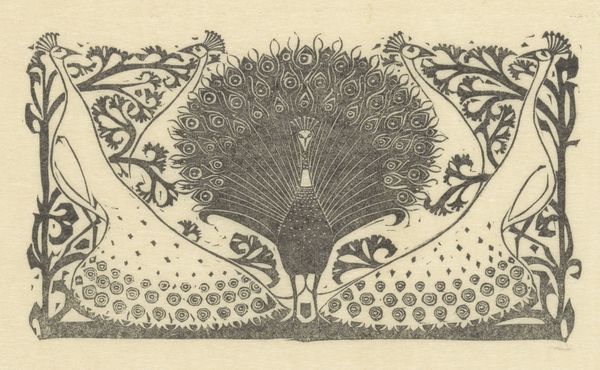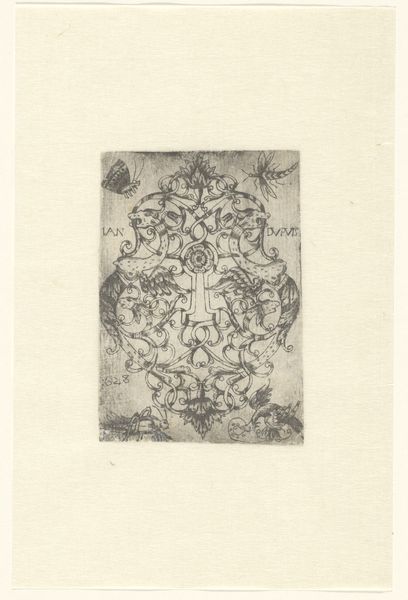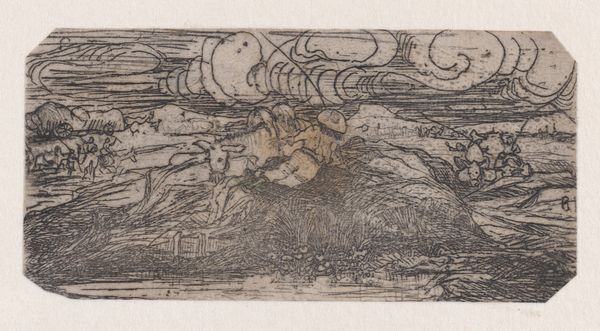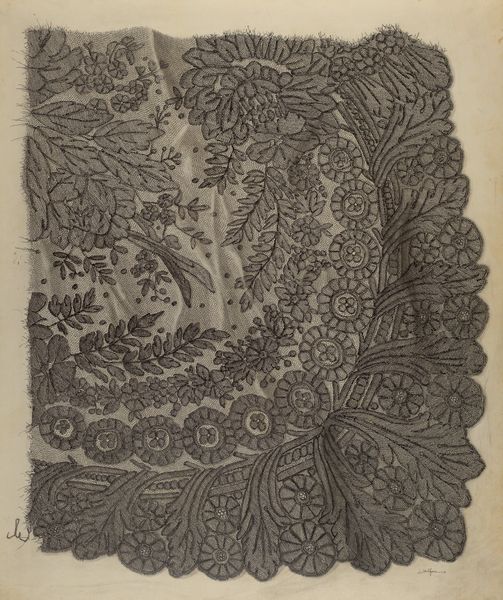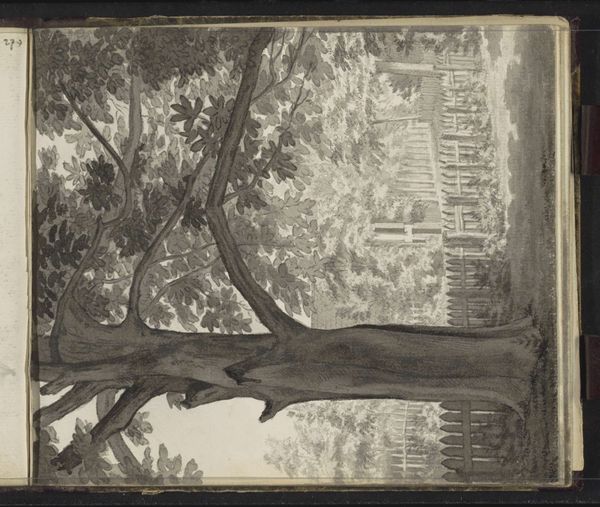
drawing, print, etching, paper
drawing
etching
paper
Dimensions: 61 × 91 mm (image/plate); 67 × 91 mm (sheet)
Copyright: Public Domain
Editor: We're looking at "A Stag, A Study" by Theodore Roussel, an etching from the late 1890s. The stag appears almost spectral. It's intriguing how the artist uses the etching technique to create this ethereal atmosphere. What's your take on it? Curator: I see this piece as Roussel engaging with a complex web of artistic and cultural anxieties. The stag itself, historically a symbol of nobility and the hunt, is here rendered almost fragile. I wonder, does this reflect anxieties about the decline of the aristocracy in a rapidly changing social landscape? The use of etching, a medium readily reproducible, challenges notions of artistic originality, doesn't it? Editor: That's a great point. The reproducibility speaks to democratization, maybe even a subtle critique of traditional hierarchies. I also notice the background almost overwhelms the figure. Curator: Exactly! Think about the rise of urbanism and industrialization during this period. Is the natural world, embodied by the stag, becoming obscured or threatened by societal progress, do you think? The art world, certainly, was experiencing its own radical shifts at this time. Editor: That’s such a fascinating reading of it. It makes me think differently about how artists were processing these enormous changes, both socially and artistically. Curator: And Roussel's position outside the traditional artistic establishment surely contributed to his unique perspective on the world, wouldn’t you agree? These prints provided access to wider audience of the contemporary art? Editor: I’m now thinking about how access to art shapes not just what we see, but how we understand the society that created it. Thanks for pointing that out!
Comments
No comments
Be the first to comment and join the conversation on the ultimate creative platform.
